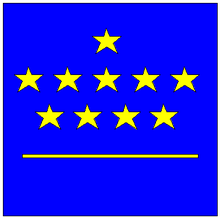Royal_Observatory_of_Belgium
Royal Observatory of Belgium
Observatory
The Royal Observatory of Belgium (French: Observatoire Royal de Belgique, Dutch: Koninklijke Sterrenwacht van België), has been situated in the Uccle municipality of Brussels, Belgium, since 1890. It was first established in Saint-Josse-ten-Noode in 1826 by King William I of the Netherlands under the impulse of Adolphe Quetelet. It was home to a 100 cm (39 in) diameter aperture Zeiss reflector in the first half of the 20th century, one of the largest telescopes in the world at the time. It now owns a variety of other astronomical instruments, such as astrographs, as well as a range of seismograph equipment (for detecting earthquakes).
| see § List of discovered minor planets |
Its main activities are:
- Reference systems and geodynamics;
- Astrometry and dynamics of celestial bodies;
- Astrophysics;
- Solar physics.
The asteroid 1276 Ucclia is named in honour of the city and the observatory and 16908 Groeselenberg is named for the hill the observatory is located on.


